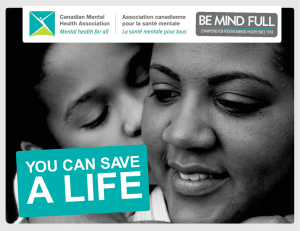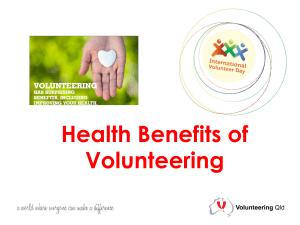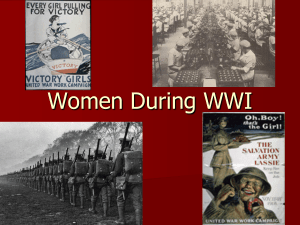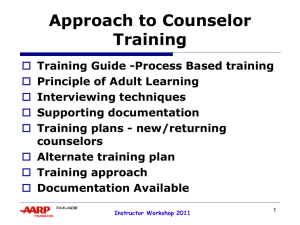Demonstrate - Frontline First Aid & Emergency Training
advertisement
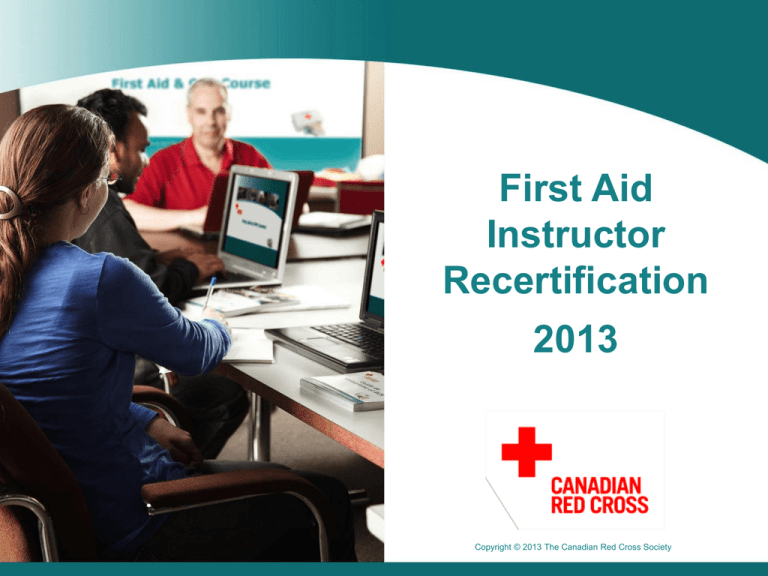
First Aid Instructor Recertification 2013 Copyright © 2013 The Canadian Red Cross Society Overview Welcome and Introduction 4 Ds • Demonstrate • Describe • Do • Debrief/Discuss Closing and Wrap-up Course Objectives Provide an opportunity to demonstrate and refine skills using the 4Ds Provide a forum to explore Red Cross program updates Provide Instructor Trainers with an opportunity to network, share ideas, provide feedback, discuss concerns and resolve issues Introductions Demonstrate Copyright © 2013 The Canadian Red Cross Society Objectives Upon completion of this session, you will be able to • Demonstrate the “Trickle-Down” teaching method • Describe the fundamentals of volunteering • Demonstrate Red Cross Code of Conduct • Respond to questions and inquiries from your course participants ‘Trickle-Down’ Teaching Model Methods and attitudes Seven Fundamental Principles Active learning Fundamentals of Volunteering Benefits of volunteering Canadian Red Cross Introduction to Volunteerism Motivation to Volunteer Know more about what motivates volunteers to understand • Obstacles in recruitment and retention • Challenges in job design and scheduling • Developing volunteer training programs • Ways to recognize volunteers and their contributions Words of the President “There is no higher calling than when a person gives his or her own knowledge, skills, time or resources to someone in need of help or comfort. This is the fundamental principle of volunteerism. Volunteering is at the heart of community-building. It promotes trust and reciprocity. It encourages good citizenship and provides people with an environment where they can learn the responsibilities of community and civic involvement.” -Tadateru Konoe President of the International Federation of Red Cross and Red Crescent Societies What is volunteering? Value of Volunteers Volunteering trends from the Value of Volunteers Report Important to recognize current volunteers and attract new ones Truth About Volunteering Unemployed versus employed Truth About Volunteering Barriers to contributing Truth About Volunteering Household income related to average hours contributed Testimonials I’ve always wanted to volunteer for an organization, especially the Red Cross. It’s a well-known organization all around the world for its implication in serving people. That’s my main motivation. I’ve always wanted to serve my community as well. Mahimpundu Ange Raissa First Aid Services Team I’m very proud of what it stands for. I believe in the Fundamental Principles that the Red Cross stands for and I just think it’s a fantastic organization to volunteer with. Peter McGuinness Disaster Management The reason I like to volunteer is I like to help out other people and I also like to make a difference. The opportunity that I saw with the Red Cross was that it would allow me to help out people, give back and make a difference. And I find that I’ve done that with the Red Cross. David Burnside Health Equipment Loan Program New Generation Six characteristics • Educated professionals • Goal-oriented • Mobile and transient • Technologically skilled • Individualistic • Interests linked to community and causes Personal Experiences Role Models Fundamental Principles “One Red Cross” Instructor Code of Conduct Standards of Behaviour Observe and promote Treat peers fairly Display professional standards Legal Responsibilities Responsibilities of a Canadian Red Cross Instructor • Provide consistent training • Be a First Aider/responder • Ensure knowledge and skills are current • Focus on first aid treatment and prevention, not on the cause of injury Responding to Questions and Inquiries How to handle challenging questions from participants • What to do and what not to do Ask the Expert Draw on technical expertise • First Aid Technical Advisory Group • National Medical Advisory Committee • Scientific Advisory Council • European First Aid Reference Centre • International Liaison Committee on Resuscitation To obtain more information • http://www.redcross.ca/myrc Demonstrate Copyright © 2013 The Canadian Red Cross Society Describe Copyright © 2013 The Canadian Red Cross Society Objectives Describe the importance of consistency as a Red Cross Instructor Describe specific technical first aid skills Consistency One Red Cross Keys to Consistency Training outcome Instructor should posses the necessary knowledge and information Rapid Fire Skills Click to animate skills one-by-one Skill #1 Correctly identify the skill • Ask the SAMPLE questions • Check the quality of vital signs • Level of consciousness, breathing, skin • If person is conscious and able to answer questions, look at all exposed areas of the body for discoloration or deformities and ask the person to move each body part one at a time, beginning with the head, to see of anything hurts Secondary Survey: Hands-Off Check Skill #2 Correctly identify the skill • Check the scene to ensure it is safe and, if so, check the person and the person’s ABCs • Call EMS/9-1-1 and get an AED • Ensure the person’s ABCs are present • Perform a secondary survey and treat any nonlife-threatening conditions Check, Call, Care Skill #3 Correctly identify the skill • Wear gloves and have a barrier device available • Check the scene to ensure it is safe and, if so, check the person and the person’s ABCs • Treat the injury using the RICE method • Check the skin temperature and colour below the injured area before and after splinting • When possible, splint the injured leg in the position in which it was found Splinting (anatomical splint for leg) Skill #4 Correctly identify the skill • Wear gloves and use a barrier device • Check the scene to ensure that it is safe and, if so, check the person and the person’s ABCs • Have someone call EMS/9-1-1 and get an AED—if alone, call EMS/9-1-1 yourself, get an AED, and then return to care for the person • Expose the wound,, apply direct pressure to the bleeding, secure the dressing, ensure the person’s ABCs are present External Deadly Bleeding Skill #5 Correctly identify the skill • Wear gloves and use a barrier device • Check the scene to ensure it is safe and, if so, check the person and the person’s ABCs • Shout for help • Care: Positioning, back blows, abdominal thrusts, continual care Conscious Choking Activity Buffet Describe Copyright © 2013 The Canadian Red Cross Society Do Copyright © 2013 The Canadian Red Cross Society Objectives Demonstrate specific first aid skills Differentiate between adapting and modifying a course Adapting a Course Importance of adapting a course, while making sure not to modify Consider • Environment • Participants • Formation • Special considerations Misunderstanding Stations Activity H.A.IN.E.S. recovery position—Adult, Child, Baby CPR using pocket mask —Adult, Child, and Baby Rolling from a face-down position to a faceup position Using a bag-valve-mask Do Copyright © 2013 The Canadian Red Cross Society Debrief/Discuss Copyright © 2013 The Canadian Red Cross Society Objectives Describe information about the Canadian Red Cross and courses Describe the importance and examine the implications of disregarding program standards Provide information on taking the Red Cross further in day-to-day practice First Aid Programs Pre-hospital Care Program Wilderness & Remote First Aid Program Caregiver First Aid Program Core First Aid Program CPR/AED Program Marine First Aid Program Instructor Development Program First Aid Program Vision • Candidates impact on vision Plan • Marketing and business development • Program and leadership development • Research • Public education SAC and FATAG Develop customer service culture Implement core goals and objectives Implement and invest in senior technical advisory groups Leadership Nationally consistent Instructor Trainers are masters of instructor development MITs conduct IT training across country Technology My Red Cross Shop Red Cross Online registration Participant tools Consistency Revisited Consistency relates to program standards Implications of disregarding program standards • Liability • Integrity • Disciplined action • Failure to support “one Red Cross” • Legislator approval Taking it Further Get involved • Disaster management • RespectED • Water Safety • National Contact Centre Website Learn of more ways to get involved • www.redcross.ca/volunteer Debrief/Discuss Copyright © 2013 The Canadian Red Cross Society Closing and Wrap-up Copyright © 2013 The Canadian Red Cross Society
